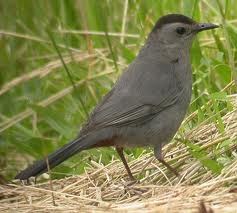Remove Flowers
In the first year, as much as you really don’t want to, you should remove flowers in the spring to encourage vegetative growth. Production of flowers and fruits deters growth when plants are too small or weak.
Watering Blueberries
Water the planting frequently enough to keep the soil moist but not saturated throughout the life of the planting. Drip irrigation or soaker hoses would be useful in larger plantings.
Fertilizing Blueberries
The need for fertilizer will be indicated by plant growth and foliage color. Generally one application of an acid-producing fertilizer each year in the spring will be sufficient. Do not fertilize after the blooming period; late fertilizing will encourage late growth in the fall which, in turn, can cause winter injury. Blueberries are in the same plant family as azaleas and rhododendrons (Ericaceae), and an azalea fertilizer formulated for acid-loving plants works well for a small planting.
Protecting Blueberries From Birds
 Many species of birds feed on blueberry fruit – think catbirds, cardinals and mockingbirds; they can harvest 100 percent of the berries if you don’t control them. Scare tactics such as aluminum plates and strips of foil flapping in the wind have limited effectiveness; birds become used to these devices.
Many species of birds feed on blueberry fruit – think catbirds, cardinals and mockingbirds; they can harvest 100 percent of the berries if you don’t control them. Scare tactics such as aluminum plates and strips of foil flapping in the wind have limited effectiveness; birds become used to these devices.
Some folks try to achieve bird control with light plastic bird netting spread over the plants. You can place nets directly on the plants, but this makes harvesting fruit difficult, and birds can feed on some of the outside fruit by pecking through the netting.
In our experience, after spending a number of years struggling, we came to the conclusion that we had to enclose the blueberries in a cage on permanent supports and big enough so we could go inside to pick berries.
Protect From Rabbits In Winter
Young branches of blueberry bushes are attractive to rabbits. Most of the damage from rabbits occurs during the winter when other food is scarce. If rabbits are a problem, apply the repellent Plantskydd in the late fall to all parts of the plant accessible to a rabbit. A second application is good if there is a warm spell in January.

